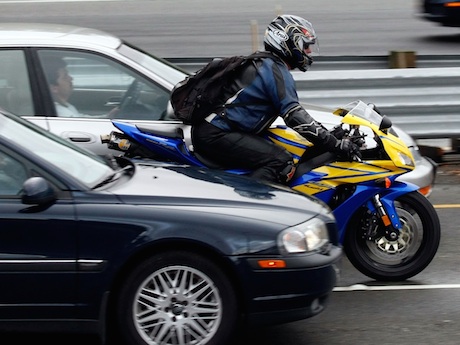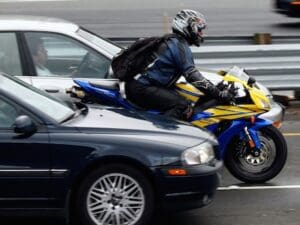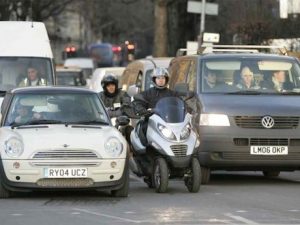By MotoDNA Motorcycle Academy director of coaching Mark McVeigh
It’s been happening around the world for decades and after recent trials in Sydney lane filtering is set to be introduced into NSW soon with Queensland likely to follow. (Meanwhile, the Victorian Labor Party supports it, but the Victorian Government spitefully rejected it, although that government may not be in power much longer! – MotorbikeWriter)
It’s a good thing for motorcyclists in many ways and lane filtering also reduces traffic congestion.
So what is this lane filtering and what skills do we riders need to be competent lane filterers?
As defined by the Centre for Road Safety in NSW, lane filtering is when a motorcycle rider moves past stationary or slow moving vehicles in the same lane at slow speeds, up to 30km/h.
That sounds pretty slow, however in a prang and no matter who’s fault it is, I’m normally going to feel more pain as a motorcyclist than the car, bus or truck driver that is involved in the tangle.
The biggest nasty is potentially going under a truck or a car door opening. It doesn’t bear thinking about, but it’s happened in the past to some poor soul.
I would not want to ride into the pointy end of a car door at 30km/h. If 30km/h sounds slow think of it as 8 metres per second.
Always with this self preservation in mind I adjust my speed depending on the dynamic risk assessment that you should always be using when riding a motorcycle.
So, along with the road-craft and attitude adjustment, what actual riding skills do we need to safely lane filter?
We will be riding slowly between stationary or moving traffic, pedestrians and cyclists up to 30km/h, which indicates the need for competent slow-speed riding skills.
These slow-speed skills enable the motorcyclist to balance slow-speed riding with directional stability.
At slower speeds we loose the benefits of gyroscopic forces from everything that is spinning on the bike, that is wheels, crank, gears, etc
This leads to reduced straight-line stability and this is when slow speed skills really come into play.
They key to slow-speed riding is keeping the chain tensioned on the drive side with low revs, clutch in the friction zone and delicate rear brake pressure.
Avoid using the front brake but have it covered just in case.
As always, on a motorcycle, look where you want to go.
Use your peripheral vision to help your spatial awareness and to spot car mirrors etc and have a good understanding of the width of your bike. Normally handlebars and mirrors are the widest point that’s likely to catch a car mirror.
Good peripheral awareness will also help you balance at slow speed.
There is nothing more ordinary than a rider walking or paddling their bike. Feet should be on the pegs when you are moving not on the ground.
So get some street cred and more importantly improve your skill and ultimately safety on the road by completing a training course that includes a line-filtering drill.
- motoDNA are offering a limited amount of “mates for free” places on their next training day at Lakeside rider training centre in Queensland on June 14. Book early to qualify.
Author profile: Mark McVeigh is a moto journalist and director of coaching at the motoDNA Motorcycle Academy. Read more of Mark’s work on the motoDNA blog, or follow motoDNA on Twitter and Facebook.




